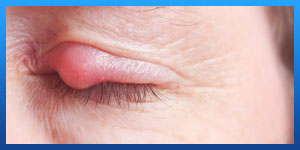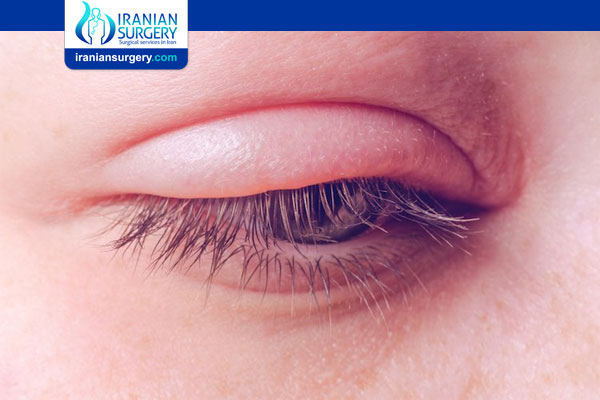why is my bottom eyelid sore?
why does my bottom eyelid hurt when i blink?
why does my bottom eye lid hurt?
why does my eyelid hurt when i touch it?
Sore Eyelids
Why is my Eyelid Sore?
Sore eyelids are a common problem that can occur for children and adults. Both the upper and lower eyelids may be affected at the same time, or only one of them. You may have pain, swelling, inflammation, irritation, and other symptoms.
Many things can cause sore eyelids, including:
. Infections
. Allergies
. Trauma
. External or environmental factors
In some cases, sore eyelids indicate a more serious health problem. However, different treatments and home remedies are available that may help you.
General symptoms
The most common symptoms of sore eyelids include:
. Pain
. Swelling
. Redness
. Irritation
. Inflammation
. Discharge
. Itchiness
Read more about : Blepharoplasty complications pictures
Read more about : Can a chalazion come back after surgery?
Read more about : When can i wash my eyes after lasik?
Symptoms that indicate a more serious problem include:
. Severe pain
. Blurry vision
. Vision loss
. Seeing halos
. Nausea and vomiting
. Fever
. Blood or pus discharge from the eyes
. Not being able to move the eye
. Not being able to keep the eye open
. Feeling that something is stuck in the eye or eyelid
If you have serious symptoms, seek immediate medical help or talk to a doctor about your sore eyelids. Don’t wait to get help because your vision may be affected permanently.

Causes of sore eyelids
Sore eyelids have many causes that range from mild to serious. Most are treatable and may go away quickly. Sometimes treatment may take longer.
- Bacterial infections
Bacterial infections can lead to sore eyelids. Haemophilus influenzae, Staphylococcus aureus, Pseudomonas aeruginosa, and Streptococcus pneumoniae are among the more common types of bacteria responsible for such infections. Symptoms include painful, swollen, red, and tender eyelids.
Typical treatments for bacterial infections are antibiotic eye drops and oral medications.
- Viral infections
Viral infections can be caused by adenoviruses, herpes, and others. You may have:
. Eyelid soreness
. Watery discharge
. Pain
. Redness
. Inflammation
Treatments may include steroid eye drops, artificial tears (Visine Tears, TheraTears, and Refresh), antihistamines, decongestants, and eye drops your doctor prescribes.
- Allergies
Allergies can irritate your eyes and cause eyelid soreness. This happens because pollen, dust, animal dander, and other environmental factors trigger the immune system. Your body releases histamine as a response, so you may have:
. Redness
. Burning
. Swelling
. Itchiness
. Watery discharge
Common treatments include eye drops, antihistamines, and decongestants. Home treatments include wearing sunglasses while outside and applying a cool, wet washcloth over your eyes.
Read more about : Blepharoplasty recovery
- Lack of sleep
Not getting enough sleep can affect your eyelids and eyes. You may have eye spasms and dry eyes because you aren’t getting enough rest. Your eyes need sleep to replenish and have fluid circulation. Try these simple strategies and habits to help you get the rest you need.
- Exposure to certain elements
Being exposed to certain elements such as the sun, wind, chemicals, smog, or smoke can cause eyelid soreness. This happens because these elements can irritate your eyes and eyelids or trigger an immune response. You may have pain, redness, irritation, swelling, or itchiness.
Treatment generally includes avoiding the triggers and using eye drops. Wearing sunglasses while outside can help shield your eyes from sun, dust, and wind.
- Blepharitis
Blepharitis is eyelid inflammation caused by clogged oil glands near the eyelashes. Symptoms include:
. Swollen and painful eyelids
. Loss of eyelashes
. Flaky skin on the eyelids
. Redness
. Watery discharge
. Sensitivity to light
This is a chronic condition that doesn’t always respond to treatment, though applying a warm compress at home may reduce inflammation. See your doctor if this persists, because you may need antibiotics, steroid eye drops, or ointments.
- Conjunctivitis
Conjunctivitis is commonly known as pink eye and can be viral, bacterial, or allergic. Symptoms include:
. Redness
. Itchiness
. Discharge that forms crusts
. Watery eyes
. Discomfort in the eyes
Common treatments include eye drops, artificial tears, antihistamines, decongestants, and steroids. Keeping the affected eye clean and applying a warm compress can help resolve the issue. In rare cases, your doctor may prescribe antibiotics. Learn more about home remedies and medical treatments for pink eye.
- Styes
Styes are red, swollen bumps that appear on top of your eyelids. They usually have pus inside of them. Symptoms include:
. Redness
. Itchiness
. Tenderness
. Watery eyes
. Pain
. Swelling
You can apply a warm washcloth several times a day as a home remedy. Other treatments include antibiotic eye drops or creams and oral antibiotics. In rare cases, you may need surgery to drain the pus from the sty. Learn about eight of the best sty remedies.
- Chalazia
Chalazia are small bumps that appear on the eyelids. They can show up on the upper or lower eyelids, but they’re often on the inside of the lid. A chalazion usually happens because oil glands are blocked in the eyelid.
Chalazia aren’t painful, but you may have redness and swelling. While they sometimes go away without treatment or with daily application of a warm compress, other times medical intervention is required.
- Contact lens wear
Wearing contact lenses can irritate the eyes and cause eyelid soreness. Dirty lenses can lead to infections and other problems. A torn or damaged contact lens can also cause pain and irritation. You may have redness, swelling, irritation, and pain. Make sure you clean your contact lenses well and never wear damaged ones. Avoid these common contact lens slip-ups to keep your eyes at their healthiest.
- Orbital cellulitis
Orbital cellulitis is a bacterial infection that affects the tissues around your eyes. It causes:
. Painful eyelid swelling
. Bulging eyes
. Vision problems
. Red eyes
. Fever
. Problems moving the eyes
This is a serious infection that may require a hospital stay and antibiotics administered through an intravenous (IV) line.
- Periorbital cellulitis
Periorbital cellulitis is an infection that affects the eyelids and skin around the eyes. It can be caused by viruses or bacteria. It often happens after a cut or other injury near the eyes. Symptoms include eyelid swelling, soreness, and redness. Treatment includes oral antibiotics or IV antibiotics.
- Ocular herpes
Herpes viruses can affect the eyes and eyelids. Symptoms include:
. Watery eyes
. Swelling
. Irritation
. Redness
. Sensitivity to light
. Feeling that something is stuck in the eyes
Treatment includes steroid eye drops, antiviral eye drops, pills, and ointments. Surgery may be necessary in rare cases that involve scarring of the cornea. Learn about a different but similar-sounding condition, herpes zoster ophthalmicus or shingles in the eye.
- Crying
Crying can make your eyes and eyelids red or swollen. Home remedies include not rubbing your eyes, washing your face with cold water, and using cold compresses. If your eyes are puffy, these tips may help.
- Other trauma
Other traumas can include injuries, burns, scratches, and cuts. You may have pain, redness, swelling, irritation, and other symptoms.
Chemical burns and deep puncture wounds require immediate medical attention.
Treatment will depend on the type of trauma or injury and may include surgery, eye drops, and medication. You may find these first aid tips helpful, but also seek medical help promptly.
- Dry eyes
Dry eyes mean you have a less than normal production of tears. They have many causes including allergies, environmental or external factors, and medical conditions. You may experience such symptoms as:
. Soreness
. Pain
. Itchiness
. Burning
. Redness
. Swelling
Treatment includes artificial tears, eye drops, eliminating the triggers, antibiotics, and punctal plugs. Home remedies including warm washcloths over the eyelids. Here are some additional home remedies to try.
- Excessive computer use
Excessive computer use can cause dry eyes and irritation. You may have eyestrain and pain. Symptoms can include:
. Dryness
. Irritation
. Pain
. Blurry vision
. Redness
. Double vision
Treatments include reducing computer use and glare, taking breaks by following the 20-20-20 rule, blinking more often, and using eye drops.
Read more about : How to Put in and Remove Contact Lenses?
Read more about : Eye color change surgery
When should you see a doctor?
You should see a doctor if you have pain or swelling in your eyelids for more than 24 hours, and symptoms continue to get worse. You should also see a doctor if you have blurry vision, fever, nausea, vomiting, eye trauma or injury, vision problems, or other serious symptoms.
Your doctor will discuss your symptoms and medical history, and do an eye exam. Tests may include:
. Slit lamp exam
. Corneal topography
. Fluorescein angiogram
. Dilated pupil exam
. Refraction test
. Ultrasound
General prevention tips
There are many things you can do to prevent eyelid soreness and maintain the health of your eyes, including:
. Avoiding eye allergens and other triggers
. Getting regular eye exams
. Blinking regularly
. Following the 20-20-20 rule for using screens
. Avoiding touching or rubbing the eyes
Sources:


2 Responses
Hello, conjunctivitis or Eye Soreness is the most common eye inflammation that can cause disease in all people. The conjunctiva of the eye is a clear membrane that covers the whites of the eyes and the surface inside the eyelids. Conjunctivitis is an inflammation and infection of this membrane that can cause inflammation for both infectious and non-infectious reasons. Conjunctival infection occurs in both acute and chronic forms. It usually improves within a few days, but if it continues, it should be treated by a doctor. Because conjunctivitis can not be treated, it can have serious complications. The most obvious sign of conjunctivitis is redness of the eye. Redness occurs due to inflammation and congestion. The most common symptoms of infectious eye conjunctivitis are a foreign body sensation in the eye, watery and redness, and discharge from the eye. The most effective treatment for conjunctivitis caused by allergic substances is the use of steroid eye drops and antihistamines prescribed by a doctor. However, if it happens a lot you should go visit a doctor, you may need other treatments other than drops.